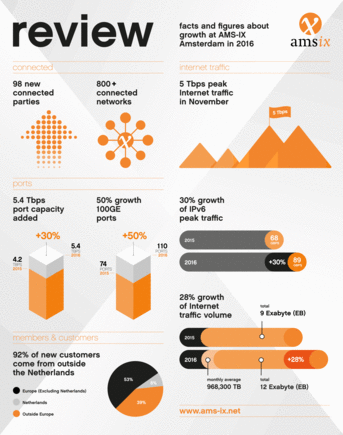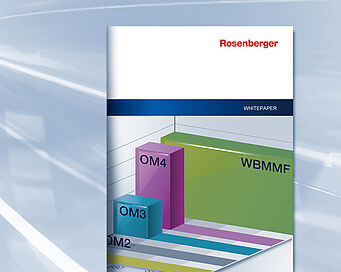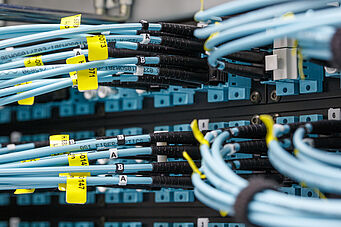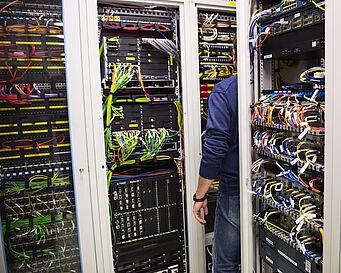How one of the largest global Internet Exchanges is meeting the demand for increased bandwidth performance and network scalability while reducing network complexity and operating costs.
Established in the early 1990s as a not-for-profit organization, AMS-IX (Amsterdam Internet Exchange) is a neutral and independent Internet Exchange based in Amsterdam, the Netherlands. It currently interconnects 900+ networks and operates seven Internet Exchanges worldwide. AMS-IX offers professional IP exchange services, also called peering services. These enable networks to offer stable, fast and costeffective Internet services to end-users and business customers.
In addition to fixed data and traditional ISPs, AMS-IX serves a very diverse and unique mix of Internet companies including international carriers, mobile operators, content providers, hosting and cloud companies, application providers, TV broadcasters, gaming companies and other related businesses - all unified in one community:
AMS-IX. AMS-IX also hosts the first mobile peering points worldwide: the Global GPRS Roaming Exchange (GRX), the Mobile Data Exchange (MDX), and the first interconnection of IPX networks (Inter-IPX).






